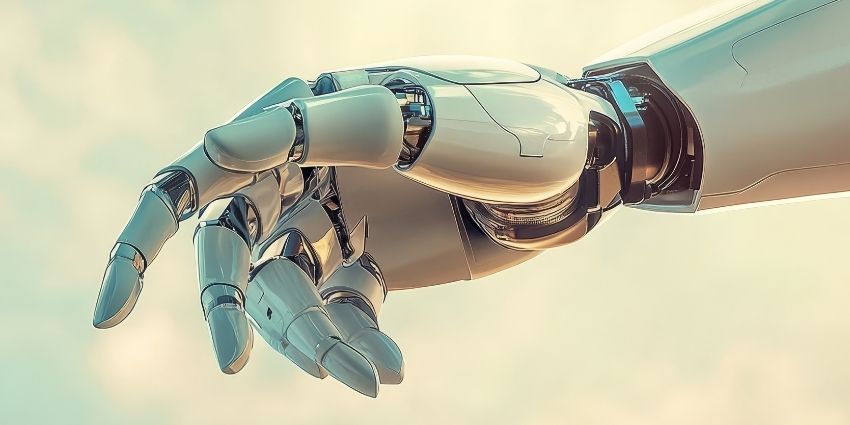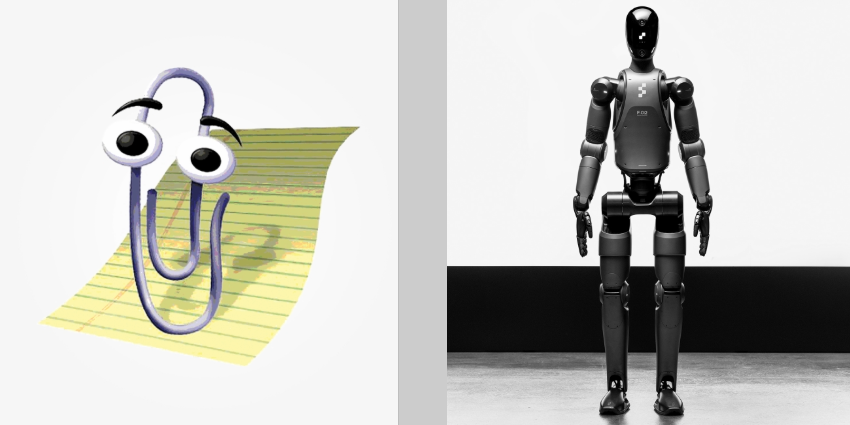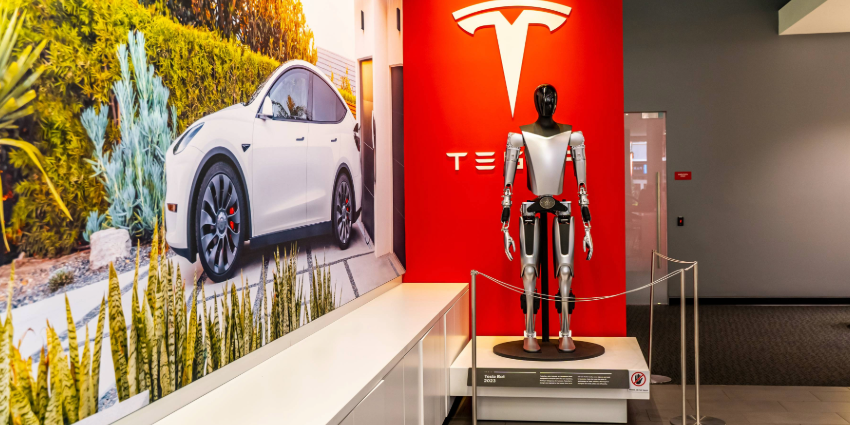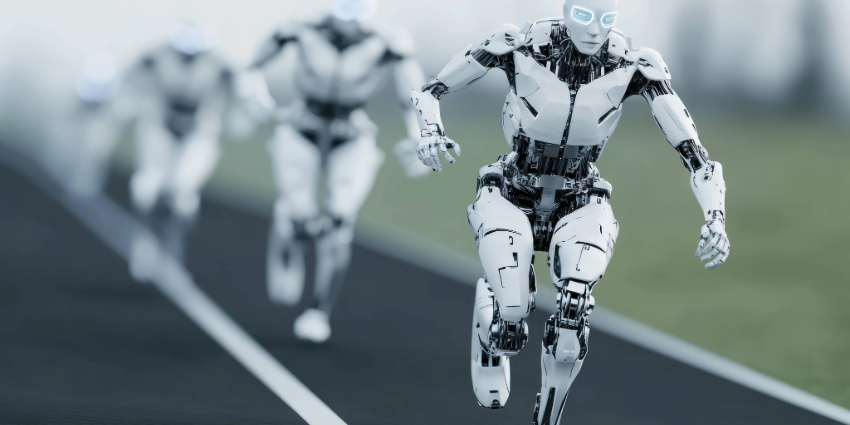Looking for insights into humanoid robot ROI? You’re not alone. In fact, it’s not just business leaders exploring the benefits of AI-powered humanoid robots. Many of the world’s biggest tech vendors now believe these robots could generate monumental returns – potentially even providing more value to companies than the latest AI software solutions.
In 2025, Elon Musk said he believed the biggest economic returns of AI would soon be seen in humanoid robots, thanks to their “quasi-infinite” capabilities. Market analysts share similar opinions. Goldman Sachs says the global market for humanoid robots could reach $38 billion by 2035.
As more companies, from Meta to Figure and even Google, dive into this sector, the accessibility of humanoid robots will only continue to grow. Despite this, many companies are still reluctant to “dive in” to an investment due to concerns about upfront costs. In fact, one report from MIR found 88% of manufacturers say “ROI uncertainties” are hampering their innovation efforts.
So, what kind of humanoid robot ROI can business leaders really expect?
Humanoid Robot ROI: The Cost of AI Humanoid Robots
There’s no denying that humanoid robots – particularly the latest AI-powered solutions – are expensive. These machines cost a lot more than your standard task-specific industrial bots or cobots – and it’s not just the initial “hardware” expenses businesses need to consider.
Hardware Expenses
Like with most tech, the cost of humanoid robots varies significantly based on design complexity and features. Tesla’s Optimus bots are expected to cost somewhere between $20,000 and $30,000 – designed to make these products more accessible to a wider market. Alternatively, cutting-edge options from companies like Figure could set you back more than $150,000 per unit.
If you’re looking for extra “features”, like durable materials for manufacturing robots, or state of the art computer vision sensors, you can expect to pay a lot more.
AI Training Costs and Software
The cost of training AI systems is another factor that affects humanoid robot ROI. Many systems now come with fully functional AI models installed, but they still need to be trained with proprietary data, tuned to specific workflows, and integrated with existing apps and tools. That all costs money.
Throughout that training, you’ll also have energy costs to consider – and, potentially, cloud services for data processing, which can create thousands in extra expenses (depending on model complexity). Then, you’ll probably need to think about training your teams to work alongside robots, too.
Ongoing Operational Expenses
Beyond the cost of energy and software, there are numerous other “ongoing expenses” that can affect humanoid robot ROI. Just like you need to pay for regular maintenance for any complex machine, you may need to pay for regular services for your robots – and those prices can vary depending on the expertise necessary (and if you need any extra parts).
Plus, you’ll have to pay for software updates – to maintain security and functionality, as well as upgrades, such as new sensors or advanced AI models. Altogether, the cost of a single humanoid robot could quickly add up to over $500,000.
Humanoid Robot ROI: Calculating Return on Investment
So, where does the humanoid robot ROI come from? How quickly can you expect to “break-even” on your investment? That depends – but when you start diving into the benefits of AI humanoid robots – it’s easy to see their value. From a GDP perspective, consider the fact that the US spends about $1.8 trillion per year on educating human beings for roles.
If humanoid robots become more affordable as they scale, building and using them in the workplace could easily be a lot cheaper than training human workers. In fact, one study suggested that spending $280 billion on humanoid robots could yield $66 trillion in productivity enhancements —an ROI of 23,500%. But let’s look at the potential ROI from a business perspective.
Labor and Skill Optimization: Beyond Mere Replacement
Humanoid robots are not here to replace human workers but to augment them. They excel in performing repetitive, hazardous, or precision-demanding tasks, allowing human employees to focus on roles that require creativity, decision-making, and emotional intelligence.
Humanoid robots can operate constantly without fatigue or breaks (according to PWC, some can manage up to 20 hours per day, 350 days per year). Plus, unlike traditional automation solutions, these tools are versatile and dynamic. A single humanoid robot in a manufacturing facility could perform the tasks of numerous machines and workers, significantly cutting investment costs.
In other words, humanoid robots could help companies extract more value out of both their machines and their human teams – reducing maintenance and operational costs instantly.
Enhancing Operational Efficiency
Adding humanoid robots to workflows can decrease error rates, improve process consistency, and minimize the cost of mistakes – all while helping companies to complete tasks faster. Humanoid robots can eliminate mistakes in inventory management, order fulfillment, and material handling, improving bottom-line performance through reduced rework, customer service issues, and waste.
Plus, as mentioned above, these bots operate with incredible speed and efficiency. The new Figure 03 robot, for instance, takes less than 20 seconds to create a part that would usually take over a week with traditional CNC machines. Faster production means quicker time to market, increased profits, and more opportunities for innovation.
Safety Improvement and Risk Reduction
Another major factor boosting humanoid robot ROI is the potential for risk reduction. These tools can handle tasks (like dealing with hazardous chemicals or lifting heavy loads), that would be dangerous for human employees. This leads to fewer workplace injuries and compensation claims and potentially reduced absenteeism for human staff.
Safety improvements can also minimize equipment damage caused by human error. On top of that, a safer, more innovative work environment can attract more talent and boost retention rates, lowering recruitment and staff replacement costs.
Humanoid Robot ROI: Examples Across Industries
Although a lot of companies are now investing in humanoid robots, like Meta, and Google with Gemini Robotics, this technology definitely isn’t “commonplace” – at least not yet. Still, a handful of early adopters across industries are highlighting “potential” humanoid robot ROI.
Manufacturing and Logistics
In manufacturing and logistics, humanoid robots are handling tasks such as material handling, assembly, quality inspection, and machine tending. Their ability to perform precision tasks quickly while adapting to product variations makes them ideal at boosting efficiency.
Companies like BMW, working with Figure, are already reducing costs, increasing productivity, and minimizing safety risks with humanoid robots. Plus, the company says that these bots are allowing it to accelerate time to market for new cars and products.
Healthcare and Medical Support
In healthcare, humanoid robots support medical staff members and patients while minimizing staffing shortages. They can help with everything from patient monitoring and movement tasks to disinfection procedures and emotional support.
Cera Care, for instance, in the UK, believes that the humanoid robots it’s deploying to support vulnerable adults nationwide will deliver a significant return on investment. It plans to use its bots to reduce NHS care costs by up to 80% in the next few years.
Retail and Hospitality
Just as innovations in self-service kiosks and AI assistants have boosted efficiency and improved customer experiences in the retail and hospitality sector, humanoid robots could have a similar effect. In the hospitality space, for instance, Macco Robotics “KIME” robot can distribute drinks and food in seconds – much faster than a human server.
In the retail sector, humanoid robots can help customers find, select, and purchase products without human support – freeing staff members up to focus on other tasks.
Humanoid Robot ROI: The Growing Potential
For now, humanoid robots are still an expensive investment – one not every company will be able to justify. However, the potential ROI of these systems is evolving. As major technology companies like Tesla explore new ways to make robots more affordable and customizable, initial upfront expenses will start to drop – opening the door to new business opportunities.
At the same time, as early adopters across industries continue to highlight the growing versatility and value of humanoid robots, more organizations will take notice.
Going forward, investing in a humanoid robot could be similar to deciding whether to build an AI model from scratch or design your own software. Yes, the initial expenses might be high, but the long-term benefits could be astronomical, too.







